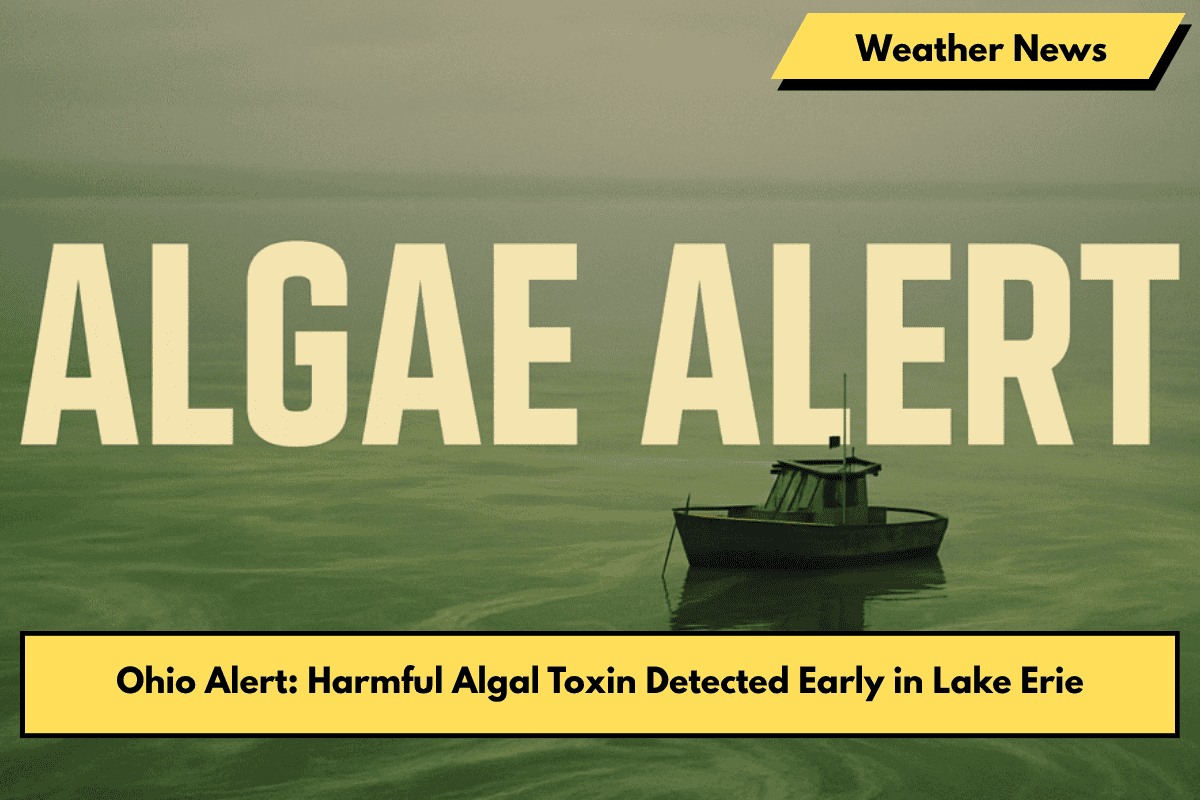Cleveland, OH – A concerning early warning has been issued for Lake Erie after harmful algal toxins were detected earlier than expected this year. The National Oceanic and Atmospheric Administration (NOAA) has announced that microcystin, a dangerous toxin produced by blue-green algae, was found in western Lake Erie during water tests conducted on April 28.
What is Microcystin?
Microcystin is a toxin produced by blue-green algae, which can be harmful to humans, animals, and the environment. While the toxin levels detected in Lake Erie were 0.12 parts per billion (ppb), which is below the levels that would trigger warnings or require water treatment, it is still notable for being detected earlier than usual.
Early Detection: What Does It Mean?
This is the earliest detection of microcystin since monitoring began. According to Reagan Errera, a research ecologist at NOAA’s Great Lakes Environmental Research Laboratory (GLERL), the toxin typically appears about 10 days later in the season. This earlier detection gives water systems and environmental managers a chance to take action before levels become dangerously high.
Current Situation
- Microcystin levels are below the advisory thresholds for drinking water (1.6 ppb) and recreation (8 ppb), but NOAA warns that these levels could rise as summer heat triggers further algal blooms.
- Sampling will continue every week through October at several sites in Lake Erie and Saginaw Bay, focusing on tracking toxin levels.
Why This Matters
Harmful algal blooms have become a significant environmental issue across the Great Lakes, and the toxins they produce can lead to fish kills, health risks for humans and pets, and disruptions to water systems. The earlier detection of these toxins helps ensure better preparedness and safer drinking water for residents and recreational users of the lake.
What You Should Know
- Early detection means more time for water systems to prepare and for the public to stay informed about potential risks.
- While the toxin levels are currently low, keep an eye on official warnings and reports for updates, especially if you live near Lake Erie or plan to visit during the summer.
- If you’re in Lake Erie’s affected areas, avoid contact with water if blooms are visible, as these can be harmful.
Table
| Date | Location | Toxin Level | What’s Happening | What You Should Do |
|---|---|---|---|---|
| April 28, 2025 | Western Lake Erie | 0.12 ppb | Early detection of harmful algal toxin | Stay informed, avoid water contact if blooms appear |
Keep Safe
With warmer weather on the way, harmful algal blooms are a growing concern. Stay updated through NOAA alerts, especially if you live near or plan to visit Lake Erie. By staying informed, you can make safe choices for yourself, your family, and your pets.












